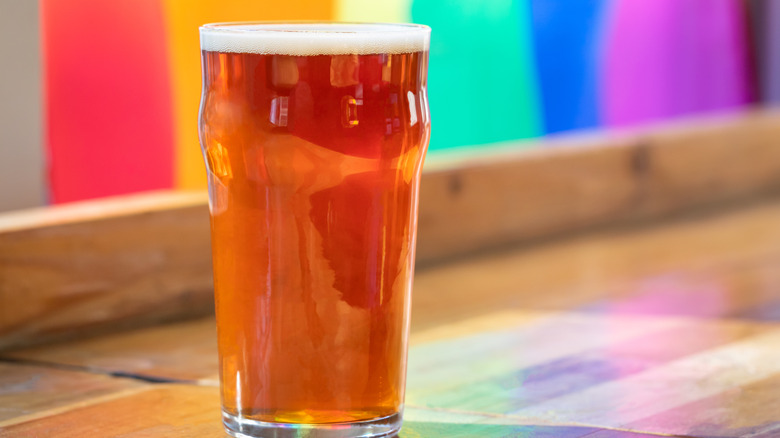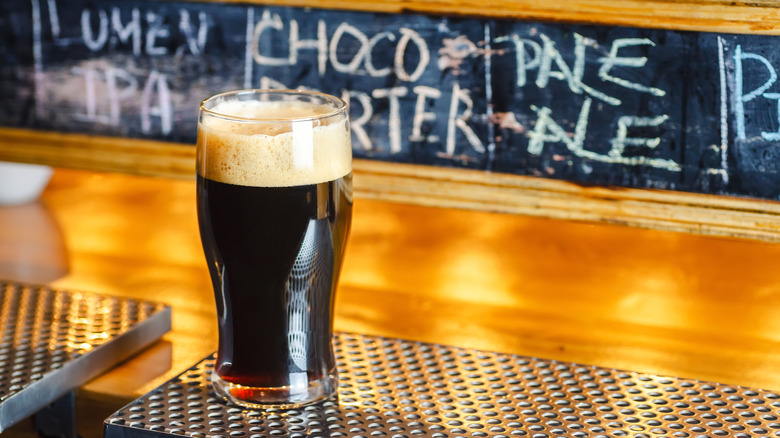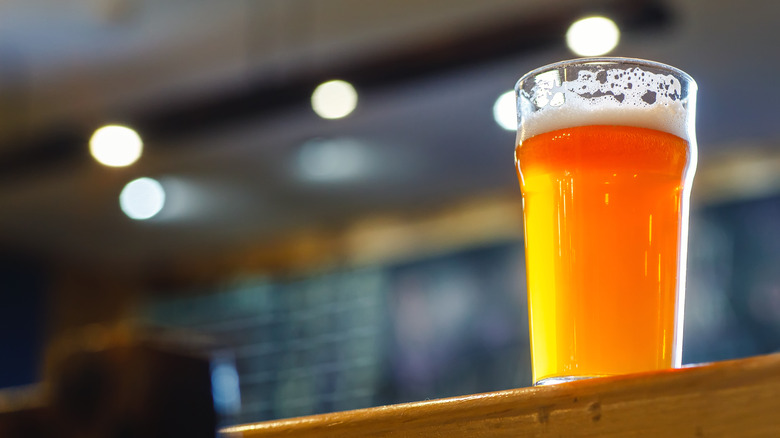What It Means When Your Pint Glass Has A Bulge
If you were to ask anyone to describe a beer glass, you'll usually find the words "glass," "beer," "bar," or "drink" in whatever answer they tell you. And the answers wouldn't be incorrect — a beer glass is a glass used for all types of beer and it does a phenomenal job. But despite being used for only one function, there are actually several types of glasses used in bars, taverns, pubs, and restaurants all over the world. Crate&Barrel tells us that a few of these glasses can include classic frosted mugs, a "steamed tulip and thistle," Weizen glasses, and pilsner glasses.
But why have so many beer glasses in the first place? According to VinePair, the reason for such variety in the beer glass market is that each glass is designed to complement or highlight certain qualities of beer, being longer, skinnier, fatter, or shorter if the drinker or the beer requires it. The Brewers of Pennsylvania explain that glasses like snifters or tulips help to enhance the natural aroma of beer while inward-shaped glasses will help the drinker "perceive" more flavors and notes of the drink.
With this knowledge in mind, what's the story with that weird bulge you may find on your pint glass?
That bump plays some key functions
That odd bulge on your pint glass seems kind of strange, but it actually plays a key role in how you enjoy your beer.
According to Taste of Home, the bulge on a pint glass is a sign that it's a Nonic-style pint glass. The Nonic pint glass first got the trademark "bump" back in 1913 when Hugo Pick patented the design in order to create an "improved drinking glass." The Nonic glass took off in the 1920s, thanks to the claim that the addition of the bump made it "unbreakable." This is because, as Taste of Home explains, if the glass were to fall, the "bump" would take the blow against the hard surface and not the extremely breakable rim. A rim that couldn't be chipped certainly appeals to many bartenders.
VinePair tells us that this bump also helps give this pint glass a certain look of distinction. Thanks to the unique design, bartenders could easily stack glasses of Nonic pints without worrying the glasses would become stuck together, although VinePair does admit that this type of glass isn't well-known for being as "elaborate" as certain other glasses.
But there is one other important reason why the Nonic glass has that bulge — and it involves barflies with a lack of good grip.
The bump keeps you from dropping your glass
If you have a little too much to drink, it's natural that you become a bit more clumsy (per Healthline). You might stumble, slur your words, or drop things that you normally would have no problem holding when you're sober. A cold glass of beer may be something that some people can't even grip right. But fortunately, the bump on your pint glass helps to make sure that your drink isn't going anywhere.
As Gear Patrol explains the bump or "lip" on the quarter top of the beer glass actually helps the glass to "rest" in a patron's hand, allowing them to securely hold the drink instead of letting it slip through their grip. Just as bartenders could use this bump to stack glasses easily together, the bump keeps the glass firmly (or as firmly as it can allow) even if the glass is slippery or a bargoer has a particularly terrible grip.
Another benefit of the Nonic glass is that the bump acts as a "fill line," letting bartenders know how much beer to pour in (via GQ). As beer is poured, the "head" or all of the foam on top, rises faster than the beer itself. If a bartender wouldn't know how much to pour, the "head" will either flow the glass or they would wind up pouring too little into the glass. So, the bump is functional too.


